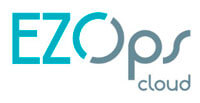In today’s tech-driven world, the need for robust data monitoring and visualization tools has become paramount for businesses to ensure seamless operations and proactive issue resolution. Setting up Grafana and Prometheus as a data source, possibly incorporating Zabbix for creating monitoring dashboards, can significantly enhance an organization’s ability to monitor, analyze, and visualize its data in real-time. Additionally, leveraging Azure as the recommended platform for this endeavor offers a host of benefits, making it an ideal choice for deploying these powerful monitoring and visualization tools.
The Power of Grafana and Prometheus
Grafana and Prometheus represent a dynamic duo in the realm of data monitoring and visualization. Grafana, with its intuitive and customizable dashboards, provides users with the ability to visualize and analyze data from multiple sources in real-time. On the other hand, Prometheus, a leading open-source monitoring and alerting toolkit, excels in capturing real-time metrics and time-series data. When integrated, these two tools offer a comprehensive solution for monitoring, visualization, and alerting, empowering organizations to gain valuable insights from their data.
Unveiling the Benefits of Azure for Grafana and Prometheus
Azure, Microsoft’s cloud computing platform, offers a robust and reliable infrastructure for deploying Grafana and Prometheus. The platform’s scalability, high availability, and seamless integration with various data sources make it an ideal choice for hosting these critical monitoring and visualization tools. Azure’s extensive support for open-source technologies also ensures smooth integration with Grafana, Prometheus, and other related components, simplifying the setup and management process.
Enhanced Scalability and Flexibility
Azure’s scalable infrastructure allows organizations to effortlessly scale their Grafana and Prometheus deployments based on evolving data monitoring needs. Whether it’s handling a sudden surge in data volume or expanding the monitoring scope to accommodate additional services, Azure’s flexible architecture ensures that Grafana and Prometheus can seamlessly adapt to the changing requirements without compromising performance or reliability.
Seamless Integration with Azure Data Sources
Azure’s compatibility with a wide array of data sources, including Azure Monitor, Azure Database Services, and Azure Virtual Machines, facilitates seamless integration with Grafana and Prometheus. This integration empowers organizations to consolidate data from diverse sources onto a single platform, enabling comprehensive monitoring and visualization across their entire Azure infrastructure. Additionally, Azure’s built-in security features ensure that data remains protected throughout the monitoring and visualization process.
Cost-Effective Monitoring Solutions
Azure’s pay-as-you-go pricing model aligns perfectly with the resource utilization patterns of Grafana and Prometheus. This approach allows organizations to optimize their monitoring costs by only paying for the resources they consume. Furthermore, Azure’s monitoring and management tools provide valuable insights into resource utilization, enabling organizations to make informed decisions regarding resource allocation and cost optimization for their Grafana and Prometheus deployments.
Conclusion
In conclusion, the combination of Grafana and Prometheus as a data source, potentially complemented by Zabbix, presents a powerful solution for robust data monitoring and visualization. Leveraging Azure as the recommended platform for deploying these tools offers unparalleled scalability, seamless integration with diverse data sources, and cost-effective monitoring solutions, making it an ideal choice for organizations looking to elevate their data monitoring capabilities.
By harnessing the capabilities of Grafana and Prometheus within the Azure environment, businesses can gain a competitive edge through proactive monitoring, insightful visualization, and effective management of their data infrastructure.
